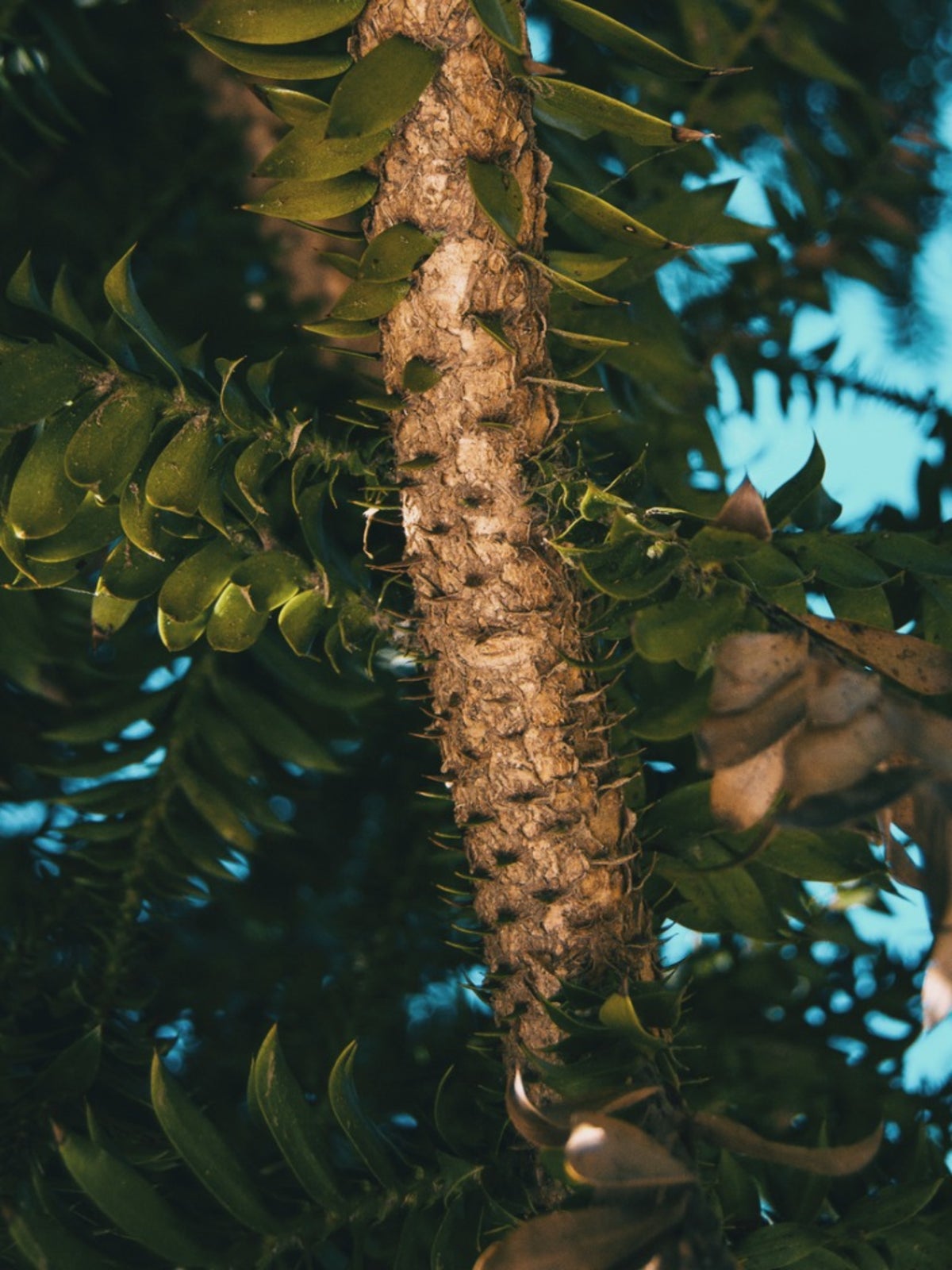Bunya Pine Information – What Are Bunya Pine Trees


What is a bunya tree? Bunya pine trees (Araucaria bidwilli) are striking conifers native to the subtropical regions of Australia’s east coast. These remarkable trees are not true pines, but members of an ancient family of trees known as Araucariaceae. For more Bunya pine information, including tips on how to grow a bunya tree, read on.
What is a Bunya Tree?
Forests of trees in the Araucariaceae family used to grow all over the planet during the days of the dinosaurs. They died out in the Northern Hemisphere, and the remaining species are found only in the Southern Hemisphere. Bunya pine information makes clear how extraordinary these trees are. Mature bunya pine trees grow to 150 feet (45 m.) tall with straight, thick trunks and distinctive, symmetrical, dome-shaped crowns. The leaves are lance-shaped and the cones grow to the size of large coconuts. Bunya pine information confirms that the seeds in the cones are edible. Each female cone grows some 50 to 100 large seeds or nuts. For hundreds of years, the edible seeds have provided a food source for the Aborigines of southeast Queensland, who considered the Bunya a sacred tree. The nuts of Bunya pine trees are similar in texture and taste to chestnuts. They produce some nuts every year, and a large crop every three years. The bumper crops are large enough that clans of Aboriginal people would gather to feast on them.
How to Grow a Bunya Tree
Despite the fact that it has sub-tropical origins, the bunya pine is cultivated in many areas (typically USDA zones 9-11) and adapts to various soil types as long as it’s well-draining. It also appreciates full sun to part shade areas. If you want to learn how to grow a bunya tree, one of the most important points to remember is that the trees have large tap roots that must extend deep into the ground. The tap roots anchor the bunya pine trees. Without healthy tap roots, they topple in the wind. How to grow a bunya tree with a strong tap root? The key is direct seeding. Bunya trees don’t grow well in pots because their germination period is unpredictable and when they do sprout, their tap roots quickly outgrow the pots. Try to protect the seeds from rodents and harsh weather. Weed the planting area well, then place the seeds on the bare ground, covered with forest litter. Position staked, plastic tree guards around each one. This manner of planting lets the seeds germinate at their own rate and the tap roots grow as deep as they can. Water regularly. Seeds can take anywhere from one to eighteen months to germinate.
Sign up for the Gardening Know How newsletter today and receive a free copy of our e-book "How to Grow Delicious Tomatoes".

Teo Spengler is a master gardener and a docent at the San Francisco Botanical Garden, where she hosts public tours. She has studied horticulture and written about nature, trees, plants, and gardening for more than two decades, following a career as an attorney and legal writer. Her extended family includes some 30 houseplants and hundreds of outdoor plants, including 250 trees, which are her main passion. Spengler currently splits her life between San Francisco and the French Basque Country, though she was raised in Alaska, giving her experience of gardening in a range of climates.